HMD, which is better known as the license holder and maker of Nokia branded smart and dumb phones, the company last month launched its own brand of smartphones targeting the budget end of the market with some high to mid range specs.
Ausdroid did attend the launch and at the time, Brendan Folitarik, GM for Australia and Oceania,has stated that HMD will still be a house of brands; a fact he reiterated when speaking with Phil a couple of weeks ago.
So can the HMD brand bring what it has done for the Nokia Brand with smart, sleek, affordable phones that won’t break the bank? Let’s have a look shall we
What’s in the box
In the box you get the device itself, the Quick Start Guide, Sim Pin, Safety Booklet, 1 metre USB Type C Cable and the user guide. Personally I would have liked to have seen a 20W wall charger included, however you can buy these cheaply from a few major retailers.
The design
The HMD Pulse pro, at least for me, does include a lot of the true, tried and tested Nokia flare, with the device not quite square, rounded edges and some usual flair that we have come to expect with HMD.
The front of the Pulse Pro 6.65-inch PS LCD display that supports 90Hz refresh rate and 480 nits (720 x 1612). The screen is a little clear and bright, however I did note in full sunlight there was some trouble viewing the screen a lot but at night it’s not as bad. There is a bezel around the display at the front, about 0.3mm or thereabouts but this does not detract from using the device.
The sides of the Pulse Pro are made of what I can only describe at a plastic covering but there is a metal frame underneath this. The sides are flat yet slightly rounded meaning you can comfortably hold the device in one hand without getting sore or tired.
The right hand side of the Pulse Pro houses the combined fingerprint sensor/standby button with the volume rocker just above this.
The left hand side houses the combined SIM card and MicroSD card tray. The bottom of the Pulse Pro houses the 3.5mm audio jack towards the left hand side, with microphone for phone and video calls located just to the right, the USB-C charging port in the middle and the speaker gril towards the right hand side.
The rear of the Pulse Pro is made of a glass back which is practically unheard of for a budget device which I do like personally. Its a nice touch, however, this can become a fingerprint magnet.
Talking about the rear of the device, the back panel is made of glass which I love and something we don’t see on budget devices a fair bit and I guess this is where HMD are looking to show that they are different.
The rear also houses the dual rear cameras located on the top right hand corner and the camera lens housing, which is rectangle in design, raises out from the back panel glass by approximately 0.05mm. The rear cameras are made up of a 50 MP wide camera lens and a 3MP depth sensor with a single LED flashlight to the left of the 50MP main lens.
In terms of what powers the Pulse Pro under the hood, it is powered by an Octa-core Unisoc T606, 6GB RAM, 128 onboard storage that can be expanded 256GB via MicroSD card. I will go into this further down in the review.
The one thing that is worth mentioning is that the Pulse Pro is 4G enabled only, meaning if you’re after 5G network capabilities, you will be disappointed but personally I find 4G more effective, especially in my area around the north west of sydney where the 5G networks is very congested most of the time, Phil — as earlier mentioned — recently completed an interview with the head of HMD Australia and Oceania, Brendan Folitarik, who goes into explanation as for the lack of 5G.
The Pulse Pro does come with dual SIM capabilities alongside MicroSD card capabilities to expand your storage which is great and something that I know a lot of our readers do like to have as an option
Lights, Camera, Action!
In terms of cameras, the Pulse Pro comes with a dual rear camera setup that is made up of a 50 MP wide camera lens and a 3MP depth sensor whilst the front facing is also a 50MP camera lens.
The camera feature modes include Photo, Night, Portrait, Video, Slow motion, Time-lapse and flash shot. Trying to go between the modes by simply swiping can be an issue because of the performance of the Octa-core Unisoc T606 and 6GB RAM. Whilst throwing modes which people will most likely use, if it’s underpowered this can be an issue trying to get some great photo shots.
Whilst on paper this combination sounds great, in reality, some photos have been underwhelming. Whilst the photos are passable, they are sometimes oversaturated with some colours being more prominent over others.
Furthermore, trying to capture moving objects – forget about it. Tried to take photos of my cat and a train pulling into my local train station and it was just blurry and disappointing. Low light things even get more disastrous where there is no clarity, lots of noise and some pixelation.
The front facing camera is a 50MP camera lens and again whilst it’s ok, similar issues with low light and over saturation being a huge issue. Even trying to get a selfie whilst walking can be an issue.
Software and performance
The HMD Pulse Pro runs Android 14 right out of the box and whilst its doesn´t look like HMD have placed their own user experience (UI) over the top it does feel like it has a small UI of its own. HMD have stated that the Pulse Pro supports 2 years worth of security and OS Firmware updates which compared to similar devices of the same price point probably won’t see anything like this.
The Pulse Pro is powered by an Octa-core Unisoc T606 which is from 2021 and is now over 3 years old, alongside 6GB RAM, 128 onboard storage that can be expanded 256GB via MicroSD card. Whilst multitasking and going between apps was ok, smooth apps sometimes did take a little longer to open.
Playing any sort of graphic intense games – it was painfully slow and even then sometimes games like asphalt 9 legends or even SimCity can be slow and buggy to use.
In terms of mobile connectivity, the HMD Pulse Pro comes with 4G connectivity only, so if you’re after 5G capabilities then I may need to seek a different device. However I find that 4G is far more appealing than 5G connectivity, given that a lot of the 5G towers in our area of northwestern Sydney are getting quite congested due to urban sprawl and telcos scrambling to catch up by building additional towers around.
Of course the Pulse Pro does support dual SIM capabilities so you can have two SIM’s such as one for work and one for personal use all on the one device.
Battery Life
5000 mAh quickfix replaceable battery which can support 20W fast charging which is great but I would have liked for a charging wall plug to be included in the box, but sadly it doesn’t but you can find these cheaply around (Kmart comes to mind).
Battery life is, well not the claimed 2 days as HMD stated at the launch. I found with some medium usage I could have up to 30% battery life left by the time I put it back on charge at about 7pm after taking it off charge at about 7:30am when I leave for work. With heavy usage you will obviously need a portable battery pack or additional wall charger and USB-C cord with you to keep the device from powering down.
Repairability
At the time of the launch of the HMD Pulse range, HMD did sell that the Pulse range including the Pulse Pro can be easily repaired, which is great from an environmental aspect and not something we see a lot especially in the budget end range. HMD has partnered with iFixit to offer replacement parts such as displays, batteries and USB-C ports for you to order and fix at home by yourself.
Now whilst I didn’t try to repair the Pulse Pro we have done a check at the prices via the iFixtit website with prices starting as low as $4.99. For example:
- HMD Pulse, Pulse Pro, and Pulse+ Battery Adhesive – $4.99
- HMD Pulse, Pulse Pro, and Pulse+ Battery Film – $4.99
- HMD Pulse, Pulse Pro, and Pulse+ Charge Port – $34.99
- HMD Pulse Pro Back Cover – $42.99
- HMD Pulse, Pulse Pro, and Pulse+ Battery – $42.99
- HMD Pulse, Pulse Pro, and Pulse+ Screen – $74.99
You can see the full range of repair items via the iFixit website here.
If you’re like me and rather not try to repair your device yourself, it’s great that mobile repair shops can also buy these parts, but of course you may pay additional fees through these stores.
Should you consider buying one?
I have been struggling to find and work out if the Pulse Pro is worthy of any consideration. Granted this might be an acceptable phone for someone who isn’t fussed on items noted where the specs are lacking, such as a grandparent or parent, maybe even a teenager potentially as their first smartphone.
Yes repairability, the design and the addition of 2 years worth of OS and security upgrades are all great, the processor, lack of 5G connectivity and camera picture quality are very much lacking; but those are probably a reasonable expectation at the price point.
HMD said at the launch, that Australian buyers had influence over the design of this generation of phones which make me wonder who was part of that research and who their target market is. I am hoping that they learn and make some changes which are very much needed to hit a broader market segment. If the rumors are true; HMD are looking to bring some Lumia inspired design back and hopefully specs, albeit more updated benchmark levels specs for 2024 and onwards, potentially setting HMD on a really sold pathway going forward.
The Pulse pro is available in three colours – Glacier Green, Twilight Purple and Black Ocean and is available to purchase right now through retail partners JB Hi-Fi, Harvey Norman, Officeworks and Big W for $299.


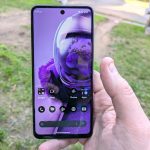




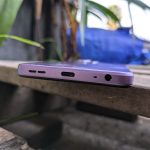
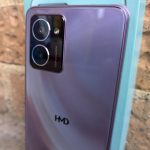









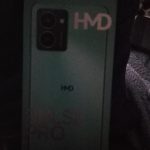
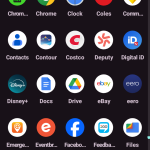
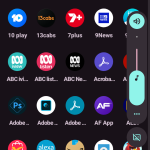
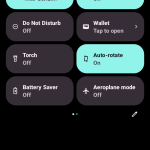
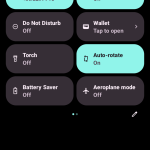

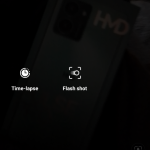

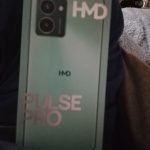




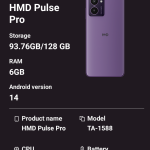



HMD should be self-ashamed for their calling a 720p device ‘Pro’.
720p is not Professional at all. 720p is newbie, rookie, beginner, amateur.